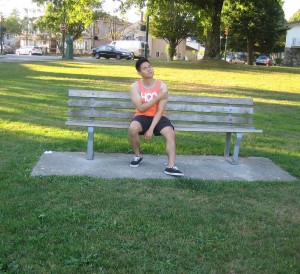The rotator cuff is comprised of 4 muscles that help stabilize the shoulder while being used such as raising the arm overhead. Remember that these muscles can end up torn or damaged due to an acute injury or through the daily wear and tear of the aging process. The indicative symptoms of a rotator cuff tear include weakness and pain but there are also other accompanying symptoms that can occur.
Pain
Always bear in mind that pain is one of the major symptoms of a rotator cuff tear. In most cases, the tear can be acute, which simply means that it occurs right after a forceful action. In some cases, it can be chronic where it is due to overuse and age, especially those who engage in activities that involve repetitive overhead motion.
When dealing with acute tears, intense pain can radiate throughout the arm right after a tearing or snapping sensation at the area of the tear. This intense pain can persist for only a few days but the exact point where the tear occurred continues to be painful to the touch.
For chronic tears, they usually occur since the tendons of the rotator cuff muscles specifically the supraspinatus tendon is rubbing against the bony structures around the shoulder. This can cause the tendons to weaken and inflame, thus resulting to pain. Take note that the pain can be described as intermittent and non-specific initially, usually occurring only during overhead activities. After some time, the muscle and tendon fibers start to fray and become torn while the pain becomes chronic. This is often evident at night time or when the individual rests on the side of the affected shoulder.

Whether the rotator cuff tear is acute or chronic, it can trigger pain in the shoulder during any movement such as lifting or lowering the arm.
Muscle atrophy
Over a span of time, an individual with a rotator cuff tear will end up with muscle atrophy. The muscle starts to appear smaller in size and eventually weaker since it could not be built up or strengthened when it is not firmly connected to a bony structure on both ends.
Weakness
Weakness in the affected shoulder is another common indication of a rotator cuff tear. If the tear in the rotator cuff is allowed to progress, the individual will find it difficult to raise or lower the arm out to the side.
The doctor will ask the individual to perform the Codman’s test. During this test, the arm is placed over the head. The individual should lower the arm in a slow and controlled manner. If he/she cannot do this or it triggers intense pain, the rotator cuff is torn.
Crepitus
Many individuals who sustained a rotator cuff tear will notice a crack-like sound in the affected shoulder joint when they attempt to move it. This sound is called as crepitus and usually indicates inflammation or other joint damage.
